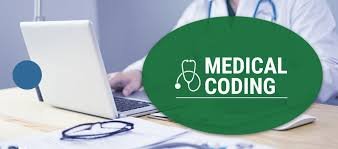🩺 Complete View of Medical Coding

Here’s a complete view of Medical Coding, designed as an easy-to-understand overview for beginners and professionals alike:
🔹 1. What is Medical Coding?
Medical coding is the process of converting healthcare diagnoses, procedures, services, and equipment into universal medical alphanumeric codes. These codes are used for billing, documentation, data analysis, and regulatory compliance.
🔹 2. Purpose of Medical Coding
-
Facilitates accurate billing and reimbursement.
-
Maintains standardized patient records.
-
Supports insurance claims processing.
-
Helps in clinical research, public health data, and quality improvement.
🔹 3. Key Coding Systems
✅ ICD-10-CM (International Classification of Diseases, 10th Revision – Clinical Modification)
-
Used for diagnoses.
-
Maintained by WHO and modified by CMS & CDC (USA).
-
Example: J18.9 – Pneumonia, unspecified organism.
✅ CPT (Current Procedural Terminology)
-
Used for medical, surgical, and diagnostic procedures.
-
Maintained by the AMA.
-
Example: 99213 – Office visit for an established patient.
✅ HCPCS Level II (Healthcare Common Procedure Coding System)
-
Used for non-physician services like ambulances, DME, drugs.
-
Example: A0428 – Ambulance service, basic life support.
✅ ICD-10-PCS
-
Used for inpatient hospital procedures.
-
Applicable in facilities like hospitals, not outpatient clinics.
🔹 4. The Medical Coding Process
-
Patient Visit: A patient receives care at a clinic/hospital.
-
Documentation: The provider documents all findings, treatments, and procedures.
-
Coding: The medical coder reviews the documentation and assigns appropriate codes.
-
Quality Check: Coding accuracy is verified.
-
Billing Submission: Codes are sent to medical billing for claim submission.
🔹 5. Types of Medical Coding
-
Inpatient Coding – Hospital stays using ICD-10-CM & ICD-10-PCS.
-
Outpatient Coding – Clinics, urgent care, using CPT & ICD-10-CM.
-
Professional Coding – Services by physicians.
-
Facility Coding – Services provided by hospitals and medical centers.
-
Risk Adjustment Coding – For value-based care & insurance modeling.
🔹 6. Career Opportunities in Medical Coding
-
Medical Coder (CPC, CCS, CCA certified)
-
Auditor
-
Coding Trainer
-
Clinical Documentation Specialist
-
Risk Adjustment Coder
-
Remote Coding Professional
🔹 7. Common Certifications
| Organization | Certification | Purpose |
|---|---|---|
| AAPC | CPC (Certified Professional Coder) | Physician/outpatient coding |
| AHIMA | CCS (Certified Coding Specialist) | Inpatient coding |
| AHIMA | CCA (Certified Coding Associate) | Entry-level coding |
| AAPC | CRC (Certified Risk Adjustment Coder) | Risk adjustment coding |
🔹 8. Skills Required for Medical Coding
-
Strong knowledge of anatomy, physiology, and medical terminology.
-
Attention to detail.
-
Familiarity with EHR systems and coding guidelines.
-
Analytical and research skills.
-
Knowledge of HIPAA and regulatory compliance.
🔹 9. Challenges in Medical Coding
-
Keeping up with frequent code updates (ICD, CPT).
-
Interpreting incomplete or unclear clinical documentation.
-
Preventing coding errors and fraud.
-
Complying with payer-specific guidelines.
🔹 10. Importance in Healthcare System
-
Ensures timely reimbursement for providers.
-
Plays a vital role in insurance claim processing.
-
Contributes to patient safety, clinical reporting, and data analysis.
-
Forms the backbone of health information management.
🎓 Discover one of the best Pharmaceutical Medical coding courses available — click below to explore the course that’s shaping future Medical coding skills.

